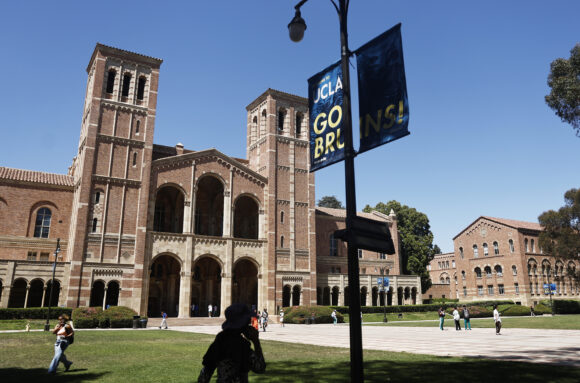California Gov. Gavin Newsom signed a bill aimed at ramping up the housing supply, bucking opposition from detractors including Los Angeles Mayor Karen Bass and neighborhoods around the state’s largest city.
The legislation allows apartment buildings as tall as nine stories to be constructed near mass transit stations regardless of local zoning codes, which supporters say will help tame sky-high housing prices. Bass warned of “unintended consequences,” while opponents in residential enclaves said too much construction will spoil their neighborhoods’ quiet atmosphere.
The clash emerged as a flashpoint in the long-running battles over how to ease a chronic housing shortage in a state where the median home price is more than $800,000. Newsom, a potential presidential contender, has previously outlined plans for California to add 2.5 million homes. The Los Angeles area has one of the nation’s highest percentages of severely cost-burdened renters, and a majority of residents say they have considered leaving due to high prices.
“All Californians deserve an affordable place to live — close to jobs, schools and opportunity,” Newsom said in a statement. “Housing near transit means shorter commutes, lower costs and more time with family.”
Like Bass, Newsom is a Democrat and his decision signals more housing fights to come in party bastions such as Los Angeles.
In areas such as Westwood, an upscale district with Spanish revival-style homes and high-end condos, some residents said they’re worried that a building binge will degrade their quality of life. They also said they have their own plans to add multifamily dwellings in the neighborhood, which according to Redfin has a median home price of $1.2 million.
“Scores of historical buildings and single-family homes would be decimated for no reason,” said Steve Sann, chair of the Westwood Neighborhood Association. “We already know where we want our high-density housing. But before we’ve had a chance to fully implement it, here comes Sacramento with a bulldozer.”
The UCLA campus in the Westwood neighborhood of Los Angeles.
State Senator Scott Wiener, a Democrat from San Francisco who authored the legislation, said it’s too soon to estimate how much home construction his plan would unlock. But addressing affordability will require adding density in zones which until now have been off limits, he said.
“If we’re not building more housing near the highest quality public transportation, where the hell are we building it?” Wiener said.
Wiener sponsored several other housing initiatives over the years, including a recent measure that exempted some projects from environmental reviews. When Newsom signed that into law in June, he called it part of his “abundance agenda,” a political movement gaining ground among Democrats that’s leading to more aggressive pro-building measures.
The new California law allows taller apartment buildings within a half mile of heavily used transit stations across eight counties, including places like San Francisco and San Diego. It also removes some protections for building on historical land.
In Westwood, which is tucked between Beverly Hills and Bel Air, residents were concerned that homes previously left untouched by other housing initiatives could potentially be redeveloped. The neighborhood is also due to add two new Los Angeles Metro stations by 2028, which can increase the area affected by the new building rules.
“Once you get that first apartment, watch people just start selling and selling and selling,” said Terri Tippit, who has lived more than half a century in a Spanish revival-style home two miles south of the University of California at Los Angeles.
Councilwoman Traci Park, who also opposes the new rules, says they could drive out low-income families from places like East LA by making their homes susceptible to new zoning rules.
A key dispute is that the city already has a plan incentivizing multifamily construction near transit, without touching single-family homes. But critics say that plan’s progress has been slow.
Los Angeles wants to add roughly 456,000 housing units by 2029, but only about 3,100 permits for new units were approved in the first half of this year. UCLA housing data analyst Aaron Barrall says he doubts the city can adequately meet its goal while exempting “the vast plurality of the city’s land.”
Copyright 2025 Bloomberg.
Topics
California
Louisiana
The most important insurance news,in your inbox every business day.
Get the insurance industry’s trusted newsletter

